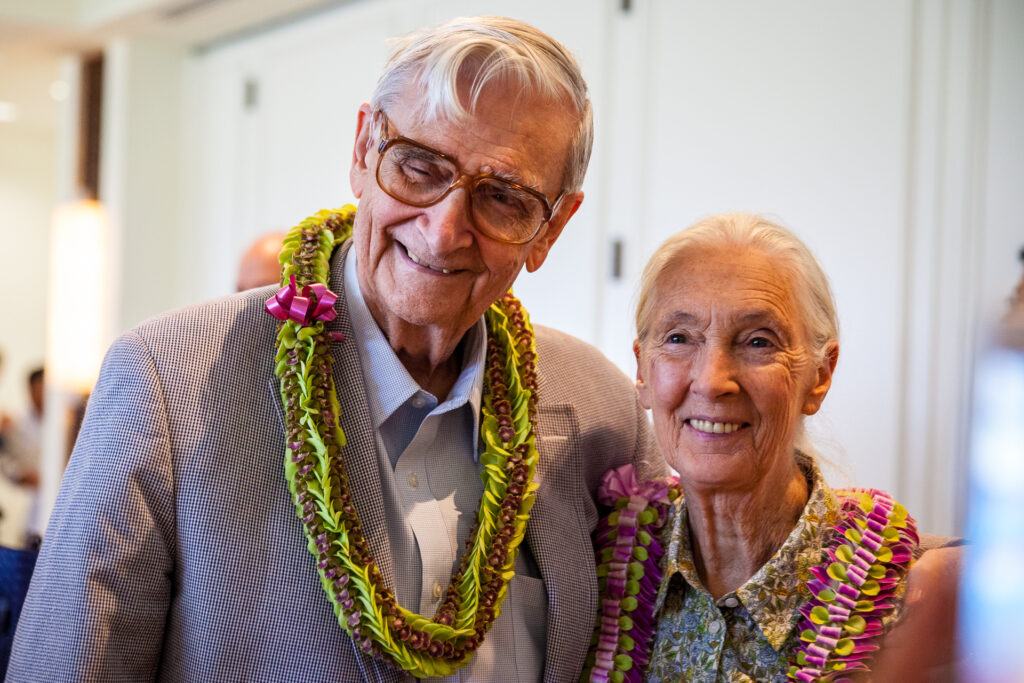E.O. Wilson
Edward Osborne Wilson (1929–2021) is widely considered one of the greatest natural scientists of our time. He was a pioneer in efforts to preserve and protect the biodiversity of our planet, receiving more than 150 international awards, including Pulitzer Prizes for his books On Human Nature and The Ants.
The concept of Half-Earth is rooted in research originally conceived by Wilson and Robert MacArthur in the 1950s. Their groundbreaking work, called the Theory of Island Biogeography, revealed that larger areas of habitat support a greater diversity of life in a mathematically predictable way. Some 70 years later, the theory has been borne out by a variety of studies in different environments and the basic principles of this theory still underpin the world’s understanding of the minimum areas of land and water that are needed for the bulk of species to survive.
In September 1986, E.O. Wilson gave the opening address at the seminal convening of the National Forum on Biodiversity held in Washington, D.C. Hundreds of people attended the event and thousands more listened in via teleconference. International media introduced the term “biodiversity” into the collective vocabulary. People everywhere began to take note of the accelerated loss of species and their habitats.
In the address, Wilson laid out how “biological diversity is being irreversibly lost through extinction caused by the destruction of natural habitats.” He made a plea for action and stated that “we are locked into a race. We must hurry to acquire the knowledge on which a wise policy of conservation and development can be based.”

Wilson spoke about the urgent need for broader research and understanding of life on our planet to protect key species and avoid unintended destruction of the ecosystems that sustain us all.
“The earth is our home. Unless we preserve the rest of life, as a sacred duty, we will be endangering ourselves by destroying the home in which we evolved, and on which we completely depend.”
E.O. Wilson
In 2016, E.O. Wilson wrote Half-Earth: Our Planet’s Fight for Life, in a bid to create a “moonshot” goal for humanity to join together and work toward ending the global extinction threat. Wilson introduced the principles of Half-Earth which argues that the situation facing us is too large to be solved piecemeal and proposes a solution commensurate with the magnitude of the problem: dedicate fully half the surface of the Earth to nature.
The E.O. Wilson Biodiversity Foundation launched the Half-Earth Project to map the fine distribution of species across the globe to identify the places where we can protect the highest number of species. The Half-Earth Project Map, launched soon after, is a high-resolution, dynamic world map and decision-support tool that guides where place-based species conservation activities are needed the most to protect Earth’s species, including our own.
In 2021, E.O. Wilson passed away leaving a legacy of conservation action that will forever inspire the global movement to end the extinction threat.
In 2023, the United Nations Convention on Biological Diversity (COP15) agreed to a Global Biodiversity Framework (GBF) with a goal to maintain, enhance, and restore Earth’s natural ecosystems by, halt human-induced extinction of known species, and by 2050, reduce the extinction rate tenfold and increase the abundance of native wild species to healthy and resilient levels. A key component to the GBF is a target to conserve at least 30 percent of land, seas, and freshwater by 20230 (known as “30×30”). Interim goals like 30×30 are understood to be just the beginning of what we can achieve when humanity joins together to protect life on Earth.


